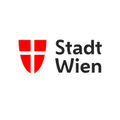Conversion of lighting in eight WIGEV care facilities to modern LED lamps completed. As many CO2 emissions saved as 500 cars emit per year.
Vienna (OTS) – Vienna (OTS) – When the first newly built nursing homes of the Vienna Health Association went into operation 14 years ago, neon tubes were still “state of the art” for lighting. However, LED lights have now become significantly cheaper and therefore more effective. “We therefore examined where in our houses an LED conversion made technical and financial sense. Above all, all publicly accessible areas where light must be on all the time from dusk onwards have emerged – i.e. corridors, lounges, the lobby, etc.
explains Johannes Nadlinger, director of the nursing homes sub-company (TU PWH) of the Vienna Health Association (WIGEV).
Electricity costs reduced by around 300,000 per year
The conversion was not always technically easy. In some ceiling lights, the neon tubes could not be replaced one-to-one with LED lamps. This required handicrafts and know-how from the TU PWH technicians. And now the LED conversion has been completed in the areas already described. The efforts have paid off: around 1.5 million kilowatt hours less electricity is now consumed annually. “The annual savings potential given current electricity prices is around 300,000 euros. As a public healthcare provider, we are showing once again that we can combine top medical and nursing care in our city with cost control.”
emphasizes City Councilor for Health Peter Hacker.
750 tons less CO2 emissions
The savings potential is also enormous in other respects. In addition to the significantly longer lifespan of the LED lamps, the conversion also brings other major advantages that take Vienna one step further towards becoming a climate-neutral city. “This technically sustainable LED transition is also hugely important for the city’s efforts to combat climate change. With this initiative, the nursing homes of the Vienna Health Association also save around 750 tons of CO2 emissions annually – that is as much as 500 cars emit on average per year.
says climate councilor Jürgen Czernohorszky happily, “I would like to thank those responsible in the WIGEV care homes for their commitment!”
Further LED conversion and additional PV systems planned
And this commitment continues. “We are now checking whether an active, early LED replacement – i.e. not only in the event of a failure – also makes economic sense in the residents’ rooms.”
, announces TU PWH director Nadlinger. The installation of additional photovoltaic systems on the roofs of WIGEV facilities is also charged. So far, three PV systems are in operation: Baumgarten Care, Liesing Care and Floridsdorf Clinic.
Additional information about the nursing homes of the Vienna Health Association
The nursing homes are bundled in a sub-company of the Vienna Health Association (TU PWH). Overall, this nursing sub-company, whose management is located on the Baumgarten nursing site (14th, Vienna-Penzing), consists of nine modern nursing homes and a social therapeutic center in Ybbs (Lower Austria). These ten care facilities offer space for around 2,800 residents and are workplaces for almost 3,800 employees.
The modern facilities are available to Viennese people who can no longer be cared for at home – regardless of their financial situation. The range of services – care and medicine around the clock as well as various therapy options – is aimed at people in unstable health conditions who are highly dependent on care and multimorbid.
Service
Printable photos will be available soon www.wien.gv.at/presse/bilder available for download.
Questions & Contact:
Mag. Christoph Mierau
Press Vienna Health Association
Tel.: +43 1 40409 60835
Email: christoph.mierau@gesundheitsverbund.at
